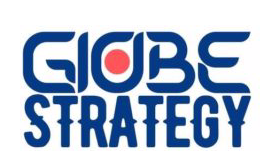matter and that it is important to take a broad view of the differences they demarcate, to identify those that matter the most in a particular industry, and to look at them not just as difficulties to be overcome but also as potential sources of value creation. [5]
Moore and Rugman also reject the idea of an emerging single world market for free trade and offer a regional perspective. They note that while companies source goods, technology, information, and capital from around the world, business activity tends to be centered in certain cities or regions around the world, and suggest that regions—rather than global opportunity—should be the focus of strategy analysis and organization. As examples, they cite recent decisions by DuPont and Procter & Gamble to roll their three separate country subsidiaries in the United States, Canada, and Mexico into one regional organization. [6]
The histories of Toyota, Wal-Mart, and Coca-Cola provide support for the diagnosis of a semiglobalized and regionally divided world. Toyota’s globalization has always had a distinct regional flavor. Its starting point was nota grand, long-term vision of a fully integrated world in which autos and auto parts can flow freely from anywhere to anywhere else. Rather, the company anticipated expanded free-trade agreements within the Americas, Europe, and East Asia but not across them. This reflects a vision of a semiglobalized world in which neither the bridges nor the barriers between countries can be ignored. [7]
The globalization of Wal-Mart illustrates the complex realities of a more nuanced global competitive landscape (see the Wal-Mart minicase). It has been successful in markets that are culturally,
administratively, geographically, and economically closest to the United States: Canada, Mexico, and the United Kingdom. In other parts of the world, it has yet to meet its profitability targets. The point is not that Wal-Mart should not have ventured into more distant markets, but rather that such opportunities require a different competitive approach. For example, in India, which restricts foreign direct investment in retailing, Wal-Mart was forced to enter a joint venture with an Indian partner, Bharti, that operates the stores, while Wal-Mart deals with the back end of the business.
Finally, consider the history of Coca-Cola, which, in the late 1990s under chief executive officer Roberto Goizueta, fully bought into Levitt’s idea that the globalization of markets (rather than production) was imminent. Goizueta embarked on a strategy that involved focusing resources on Coke’s megabrands, an unprecedented amount of standardization, and the official dissolution of the boundaries between Coke’s U.S. and international organizations. Fifteen years later and under new leadership, Coke’s strategy looks very different and is no longer always the same in different parts of the world. In big, emerging markets such as China and India, Coke has lowered price points, reduced costs by localizing inputs and modernizing bottling operations, and upgraded logistics and distribution, especially rurally. The boundaries between the United States and international organizations have been restored, recognizing the fact that Coke faces very different challenges in America than it does in most of the rest of the world. This is because per capita consumption is an order of magnitude that is higher in the United States than elsewhere.
